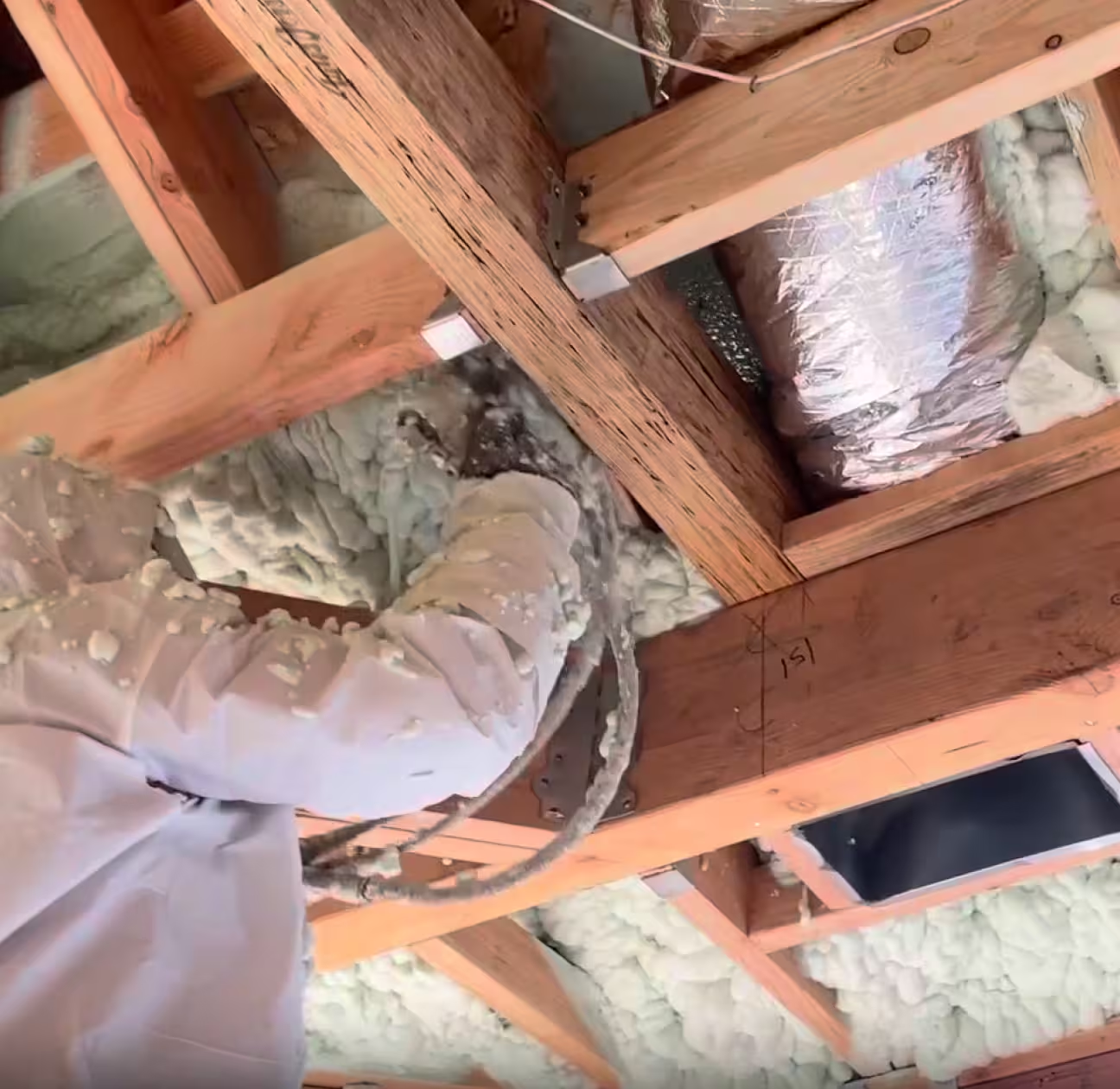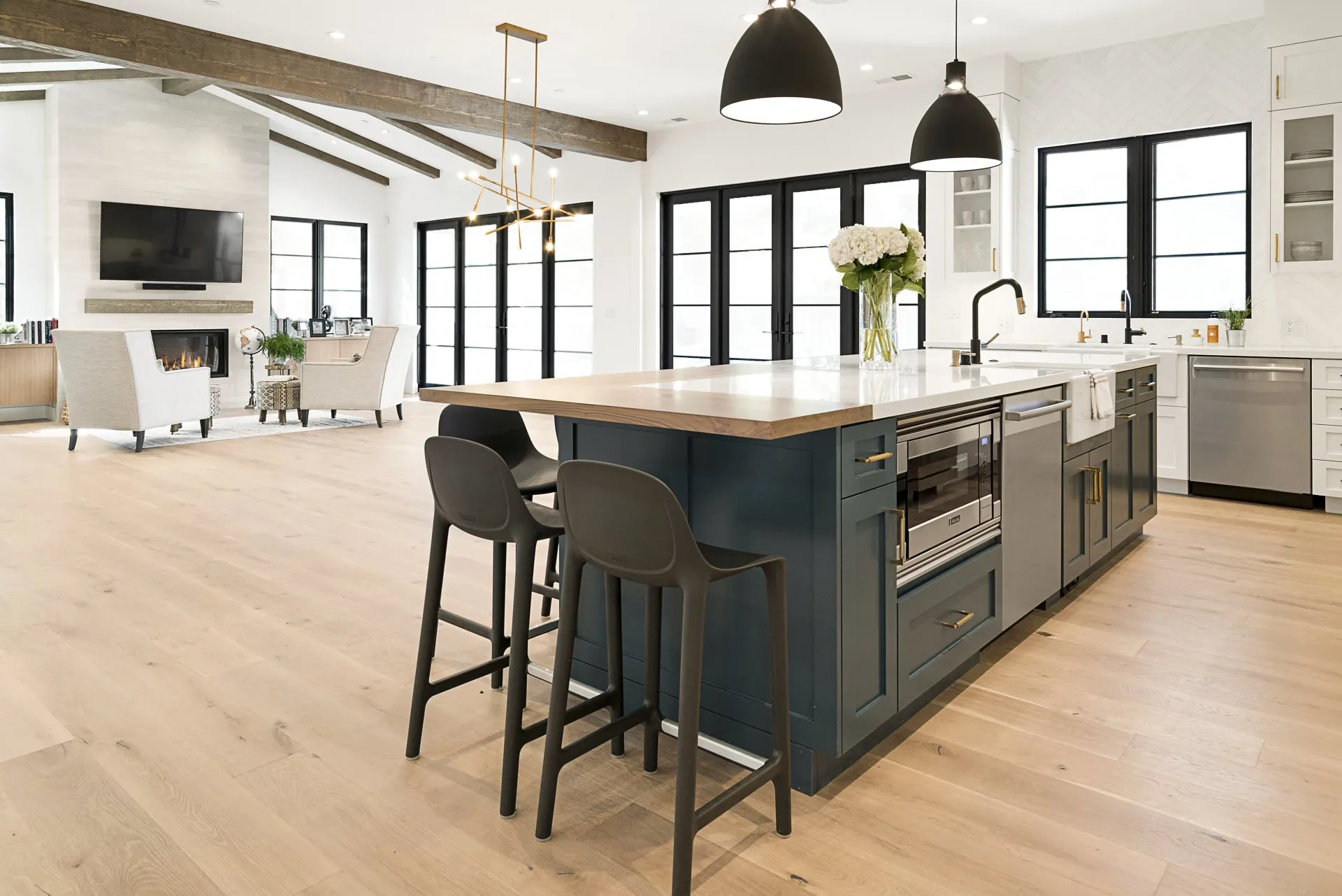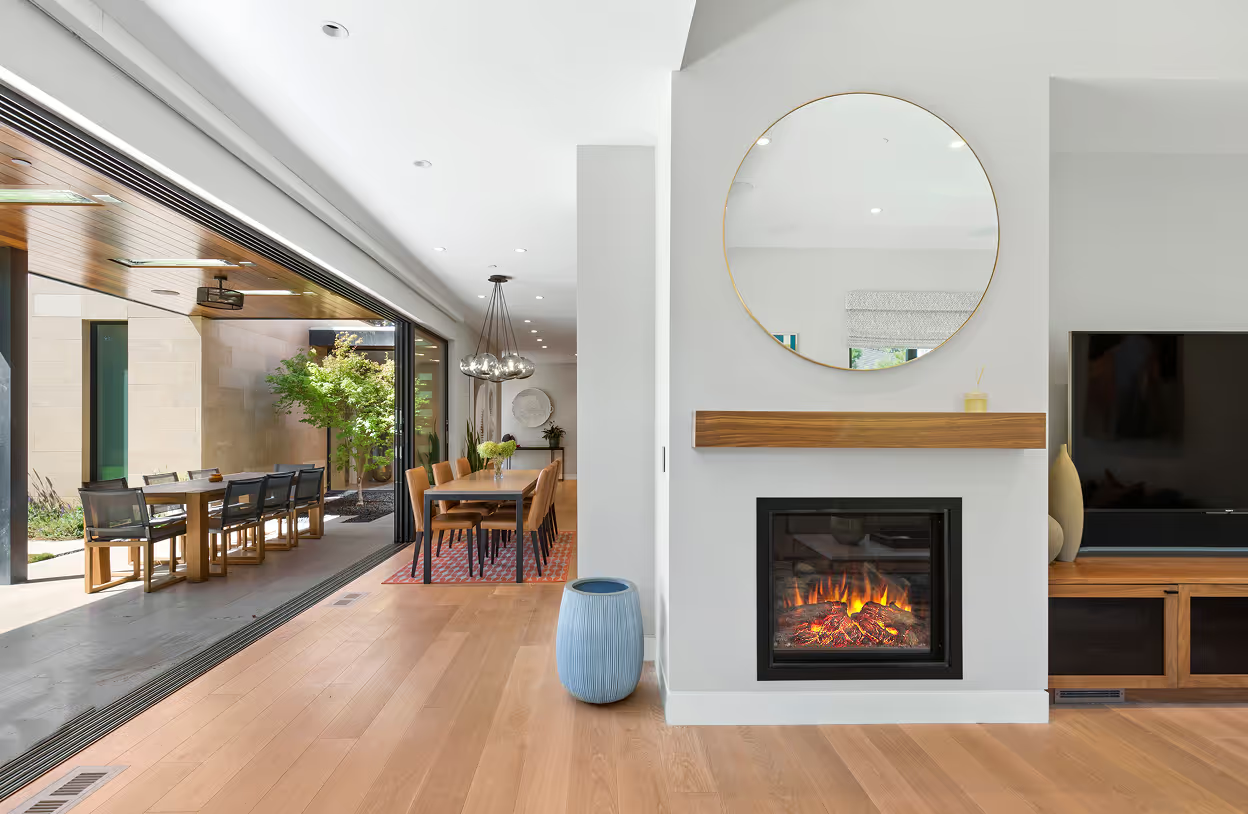Nobody likes high energy bills, which is why one of the most common goals when building or remodeling a home is to maximize the home's energy efficiency, saving resources long term and lowering your carbon footprint. There are several ways to make a home more energy efficient, but proper insulation is one of the most important (and necessary) measures to facilitate higher energy efficiency.
When you hear the word insulation, pink, cotton candy-like material probably comes to mind. Yes, that is a popular type of insulation, but there are now numerous alternatives available.
Spray foam insulation is one of the more popular modern options.
We spoke with SDI Insulation about what you need to know about spray foam insulation. We'll go through the differences between open cell and closed cell spray foam, as well as the benefits, costs, and significance of R-value, as well as the location of your home.

What Are The Benefits Of Spray Foam?
Spray foam insulation is a combination of liquid chemical ingredients that, when mixed, react to form a foam-like substance that can expand more than 30 percent of its original size.
The expanding property of spray foam allows it to fill small cracks, gaps, and hard-to-reach areas, effectively air sealing a home. It helps the building maintain a constant and comfortable temperature, which reduces energy consumption and, ultimately, your carbon footprint as well.
Another significant advantage of spray foam insulation is that it helps improve indoor air quality by protecting the home from mold and mildew and reducing allergens that are able to pass through walls.
Spray foam is considerably more durable than other forms of insulation. Unlike other materials that shift and sag with time, spray foam stays put and lasts throughout the life of a structure.
Spray foam is categorized into two types: open cell and closed cell. One is not necessarily superior to the other; it simply depends on which one best meets your home's needs.
Understanding R-Value
The first step to choosing an appropriate insulation for your home is understanding the R-value. The R-value is a measurement used to determine an insulator's ability to resist air flow, which varies depending on:
- The type of insulator
- Insulation density
- Thickness
The general rule is that the higher the R-value, the better; however, not all climates necessarily require insulation with extremely high R-values.
Closed cell spray foam has an R-value of 6 to low 7. Its high R-value makes it perfect for regions with extreme weather conditions and/or spaces that do not have enough cavity depth but require a high R-value.
Open cell spray foam has a lower R-value of 3.6–3.9. Its open cell structure means that it is softer and not as dense as closed cell spray foam, making it more suitable for warmer climates.
Location Matters
The Department of Energy has divided the U.S. into seven climate zones. Florida (zone 1) is a much warmer region, so the recommended R-value for attics, floors, and crawl spaces are much lower than what is suggested for northern areas in zone 7, where homes experience periods of extreme cold.
Whether you choose open or closed cell spray foam is climate-dependent. If you live in an area with cold weather conditions, you will want a more robust insulation with a higher R-value, like closed cell spray foam. Closed cell spray foam's structure allows it to act as a water and vapor barrier, which is critical for reducing mold in crawl spaces and attics.
For areas with mild winters and hot summers, open cell spray foam is much more appropriate. It is less dense and, while not waterproof, it is air impermeable and a class 3 vapor retarder.
Both types of spray foam serve as heat gain reductions, which means that on hot summer days, it will take longer for the sun to penetrate through the spray foam, keeping your home cool.
How Much Does Spray Foam Cost?
Spray foam is priced per board foot (an area that is one-inch-thick and one-foot-wide/long.)
When comparing open cell and closed cell spray foam, closed cell spray foam is nearly double the price. Closed cell spray foam costs $1.30 to $2.00 per board foot, while the price for open cell spray foam is between 60 cents to $1 per board foot.
To give you an idea of what the price difference would be between the two:
- 2,000 sq ft of roof R-38
- 2,500 sq ft of roof R-21
- 1,500 sq ft of floor R-19
Open Cell House = $25,000
Closed Cell House = $47,000
Don't let the initial cost of spray foam discourage you. Remember that you are making an investment in your home! Spray foam insulation, unlike other insulation options, can significantly reduce your utility bill by retaining the warm air you put into your home during the winter months and the cool air you put in during the hot summer days.
Spray foam can even cut down on carpentry costs because it eliminates the need for roof vents. The initial cost of spray foam will pay off in the long run through the energy saved throughout the life of your house.






